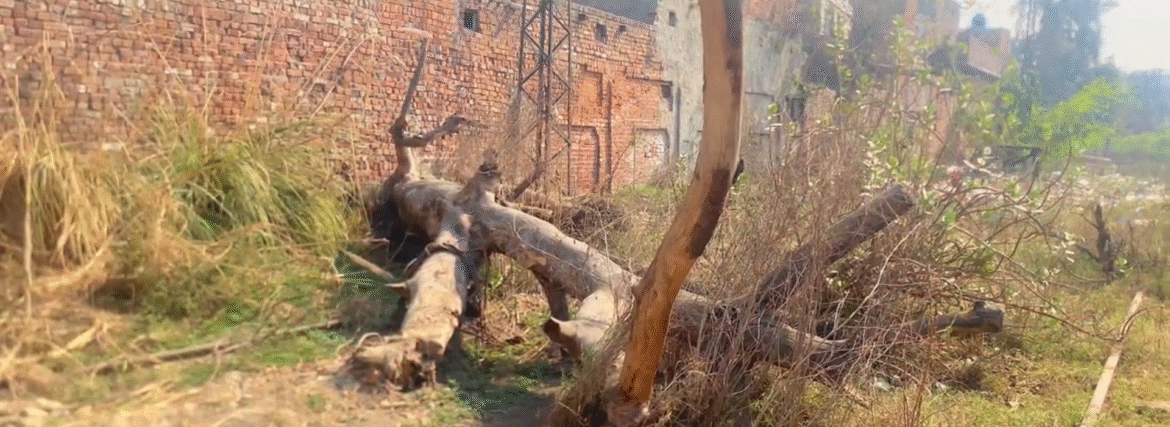AI Generated Summary
- Preserving Dera Tahli Sahib would not just honor the legacy of Baba Sri Chand but also heal a wound still raw in the collective consciousness of Punjabis on both sides of the border.
- One such forgotten gem is Dera Tahli Sahib in Lahore, once the spiritual seat and final resting place of Baba Sri Chand, the eldest son of Guru Nanak, founder of the Sikh faith.
- The site, which drew its name from a centuries-old Tahli (Indian rosewood) tree, today lies in ruins—its memory barely clinging on through fragments in old maps and bricks scattered in the dust.
The story of Partition is not just one of human displacement but also of the erosion of centuries-old heritage. Among the most painful losses for Sikhs was separation from their sacred sites across what became Pakistan. Over 75 years later, many of these once-vibrant shrines have slipped so far from communal memory that they are almost as if they never existed.
One such forgotten gem is Dera Tahli Sahib in Lahore, once the spiritual seat and final resting place of Baba Sri Chand, the eldest son of Guru Nanak, founder of the Sikh faith. The site, which drew its name from a centuries-old Tahli (Indian rosewood) tree, today lies in ruins—its memory barely clinging on through fragments in old maps and bricks scattered in the dust.
The Legacy of Baba Sri Chand
Born in 1494, Baba Sri Chand chose an ascetic life distinct from his father’s philosophy of engaging in the world while remaining spiritually detached. He went on to found the Udasi sect, a group of wandering sadhus who lived on the fringes of mainstream Sikh practice.
Despite early tensions with the Sikh Gurus over his claim to guruship, Sri Chand later commanded respect for his lineage and piety, particularly from Guru Hargobind Sahib, the sixth Sikh Guru. His dera in Lahore became the hub of Udasi teachings until his death in 1612 (some accounts suggest 1629), after which his Samadh was constructed there.
During the rule of Maharaja Ranjit Singh, Udasi priests enjoyed influence and patronage, with nearly three-quarters of their institutions flourishing under royal support. But the tides turned during the Gurdwara Reform Movement of the 1920s, when mainstream Sikhs asserted control over their places of worship, marginalizing Udasi mahants.
Vanished from Memory
By the late 19th century, historians such as Muhammad Latif still described Dera Tahli Sahib in detail, locating it south of the colonial-era Lunatic Asylum and near the newly established Lahore Railway Station. A colonial map from 1867 even marks “Tahlee Sahib” at this exact spot.
Yet by the time of Partition in 1947, the shrine had already been demolished. With the Sikh population forced out of Lahore, the memory of Dera Tahli Sahib withered, leaving only passing references in old records. For generations, it was absent from Sikh narratives, as if erased altogether.
Earlier this year, researchers revisited the site using historical maps and modern satellite tools. At the marked spot, they found a decaying tree lying across the ground—eerily corresponding to the Tahli tree after which the shrine was named. Scattered Sikh-era bricks provided further clues. For those present, it felt like rediscovering a lost heartbeat of history.
Call for Preservation
Pakistan in recent years has made efforts to open up its cultural and religious heritage to international visitors. Restored railway stations, heritage trails, and tourism initiatives have already attracted Sikhs, Hindus, and global heritage enthusiasts.
But Dera Tahli Sahib stands as a stark reminder of what has been lost. The Lahore Railway Station nearby—once the last departure point for countless Hindus and Sikhs fleeing Partition—already evokes powerful emotions for pilgrims. Restoring Dera Tahli Sahib could add yet another meaningful stop for the thousands of Sikhs who travel to Pakistan annually in search of their roots.
A Heritage at Risk of Being Lost Forever
The decay of Dera Tahli Sahib is not an isolated case but part of a larger tragedy: countless Sikh heritage sites across Pakistan’s rural and urban landscapes have disappeared from memory. Each forgotten shrine deepens the rupture between communities and their history.
The responsibility now lies with governments, historians, and civil society to reclaim this memory before it is too late. Preserving Dera Tahli Sahib would not just honor the legacy of Baba Sri Chand but also heal a wound still raw in the collective consciousness of Punjabis on both sides of the border.




